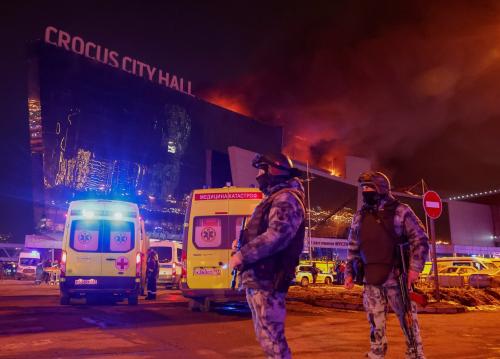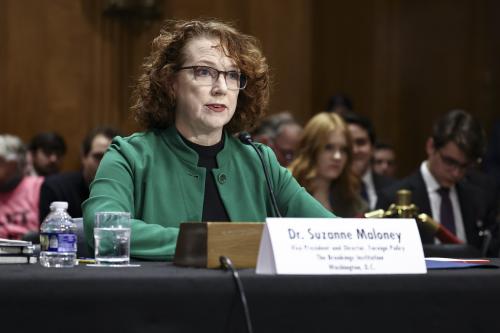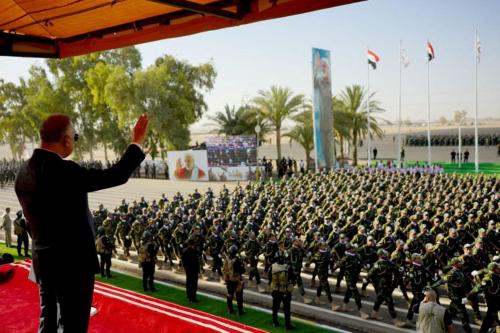Al Qaeda is building its most dangerous stronghold ever in the borderlands between Syria and Iraq. Hundreds of new jihadist fighters are flocking to this battlefield in the heartland of the Middle East. And with the civil wars in both countries all but certain to endure for the foreseeable future, the danger from this stronghold is growing.
Two al Qaeda franchises are both competing and collaborating today in the violence that is wracking Syria and Iraq. The older and more dangerous calls itself the Islamic State of Iraq and al Shams (ISIS). Al Shams means ‘Greater Syria’—that is, Syria, Lebanon, Jordan and Israel-Palestine—and the name reflects ISIS’s ambitions. It intends to erase the borders of the modern Middle East created a century ago by Winston Churchill after the end of World War I, and to create an al Qaeda-run emirate across the region. Every week, ISIS terrorists carry out multiple acts of mass-casualty violence in Syria and Iraq.
The amir of ISIS is a shadowy figure who uses the name Abu Bakr al Qurashi al Husayni al Baghdadi. He is the fourth leader of the group; his three predecessors died in office. He claims to be a direct descendant of the Prophet Mohammad himself, and his name reflects this pedigree, as it refers to the tribe and family of the Prophet. His jihadi biographers say he is an Islamic scholar with a Ph.D. in Islamic jurisprudence and the author of a book on Islamic theology. He joined al Qaeda when America invaded Iraq in 2003 and was an early supporter of Abu Musaib Zarqawi, the founder of al Qaeda in Iraq. Baghdadi’s credentials make him a formidable figure in the global jihadist movement.
The second franchise is the al Nusra front, itself a creation of al Qaeda in Iraq in 2012. It is headed by another shadowy figure using the nom de guerre Abu Muhammad al Golani. He, too, was a protégé of Zarqawi and was sent by al Qaeda in Iraq to set up al Nusra after the Syrian revolution against Bashar al-Assad began. The Assad regime claims to have killed Golani recently but this remains unconfirmed.
Baghdadi asserted this spring that ISIS should be in charge of all al Qaeda activity in the region and that al Nusra should acknowledge his leadership. Golani refused and has been backed by al Qaeda’s top amir, Ayman Zawahiri, from his hideout in Pakistan. On the ground, the two groups compete but also collaborate. They even put out a video of fighters from the two camps engaged in robust tug of war with a rope to show they are not enemies.
Zawahiri issued a 14-point message this weekend urging collaboration between the two groups and again calling for Golani to run operations in Syria and for Baghdadi to run them in Iraq. Baghdadi is unlikely to comply, and Zawahiri has long been unable to enforce his writ on the Iraqi branch of al Qaeda. Zawahiri also urged both to step up their attacks.
Both are attracting foreign volunteers from across the Islamic world to join them to fight in Syria and Iraq. Saudi authorities have told me almost a thousand Saudis have gone to fight with al Qaeda in Syria and they estimate the real number is probably twice as many. Another 800 Jordanians are estimated by experts in Amman to have gone to join the battle, and at least 100 Jordanians have been killed fighting in Syria. Several Jordanian jihadists have become senior lieutenants in the Nusra front. The Kings in Saudi Arabia and Jordan fear the day these fighters come home, but the arms and money they send to the Syrian opposition all too often ends up in al Qaeda’s hands.
The head of the British internal security service, MI5, estimated this week that the number of British Muslim citizens who have gone to fight in Syria is in the “low hundreds.” Security services across Western Europe report the same phenomenon of dozens of angry young Muslims going to Syria and Iraq for training and battlefield experience. They, too, will come home some day.
The al Qaeda stronghold is in the center of the Arab world and the Middle East. Unlike al Qaeda’s other strongholds in Afghanistan before 2001 or in Yemen, Somalia and North Africa today, this stronghold is not on the periphery of the Middle East—it is in its heartland, which makes it all the more dangerous. Already Jordanian security has foiled one attempt by al Nusra to stage multiple simultaneous attacks in Amman targeting embassies and shopping malls. The black flags flown by al Qaeda supporters have been seen in Jordanian cities like Maan and Zarqa. The same is true in cities across Lebanon. Israel and Turkey are increasingly nervous.
The rapid growth of al Qaeda in Syria in the last two years and its rejuvenation in Iraq is part of the broader emergence of the third generation of al Qaeda—AQ 3.0 if you like—that has taken place since the death of Osama bin Laden and the beginning of the Arab Awakening. After being initially surprised by the revolutions that swept across the Arab world, al Qaeda has exploited the chaos and breakdown of law and order that followed to build or expand sanctuaries in Yemen, Libya, Algeria, Mali and now increasingly in Egypt as well as in Syria and Iraq.
The military coup in Egypt this summer is cited by al Qaeda’s various leaders as proof that democracy, Twitter and peaceful demonstrations have all failed to bring real change and that only jihad and terror are the answer to Islam’s problems. The longer the civil wars in Syria and Iraq continue, the more they are merging into one conflict and the more they will provide the al Qaeda movement and all its franchises new room to operate. The implications for security across the region and across the world are frightening.



Commentary
Op-edAl Qaeda’s Most Dangerous Stronghold
November 11, 2013